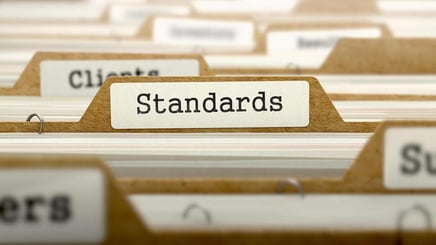Prepare For the Worst with the Best in the Business
Experience capable, consistent, and easy-to-use business continuity management software.
Once upon a time I practiced business continuity management without the help of automated systems. Back then I did every Business Impact Analysis (BIA) in a Microsoft Word document. That kind of “manual” system was responsible for some of the most difficult [read: nightmarish] BIAs I’ve ever done—including one for a large healthcare tech company where, every day for two weeks, I’d record interviews on the conference room chalkboard and then diligently type it all into Microsoft Word.
Despite the clunkiness of the method, it worked for a while. The tipping point was when we got hired by a international corporation and had to work in countries across the globe.
The job had gotten so big that I knew my team could no longer do BIAs—or anything else—manually. (At the time we also did compliance assessments using Microsoft Excel spreadsheets.) It was time to automate the process.
I haven’t looked back since.
What’s wrong with manual business continuity management systems?
Having been on the back end of manual systems, I am intimately familiar with the challenges they pose for users, including:
- There’s more room for error. When all data is entered manually there’s greater potential for mistakes. Plus, the system won’t catch those mistakes since different (but related) data lives in different spreadsheets or documents.
- It’s difficult to collaborate with team members. Excel and Word were built for single users. Real-time collaboration is impossible with them, and more than one contributor makes version control a challenge.
- You can’t aggregate your data for broad insights. Data in a spreadsheet or document is basically an “island” of information—one that’s hard to glean insights from on its own.
- You can’t easily report. If you’re using a manual business continuity system, presentation creation and design adds an additional step to the data management process.
- It’s inconvenient (for all the reasons mentioned above).
No matter the size of your business or the complexity of your business continuity activities, all of the above can wreak havoc on your program—and make your job more difficult than it needs to be.
Considerations When Choosing Business Continuity Software
There are some great automated systems that can help you overcome these problems. But software can’t fix an inadequate process, and even the best business continuity software won’t transform your workflow if you don’t choose the right one for your company (or if you don’t properly use the one you choose).
I’ve seen BC managers buy business continuity software tools they end up disappointed with—but that situation can be avoided if you keep the following in mind:
Before You Buy…
- Make sure the software tool fits your needs. Don’t buy something that does more than you need, or you’ll quickly find yourself drowning in a system that’s too complex and confusing. So if you’re a small or medium-size company, for example, don’t buy software designed for a large corporation.
That said, you also don’t want to repeat the search process two years down the line, so get one that has some capacity to grow with you. - Be prepared to pay for a quality tool. High-quality software costs money. That doesn’t mean you can’t try to negotiate a discount with the provider, but any tool of real value will be worth the price you pay.
After You Buy…
- Take time to set the tool(s) up properly. If you don’t make an effort to understand how your business continuity software works, you will most likely miss out on some of its best features—and probably even be disappointed with its performance. Setup and configuration set the tone for how well a tool will work for you.
- Have a clear sense of what you want out of the tool and make sure you set it up to provide that. And if you need help, your provider’s customer service team should be more than happy to assist you without charging for every minute they spend with you.
- Don’t try to make your new tool your old tool. Your new automated system should be better and/or faster than your old one, and have lots of new, beneficial features.
So don’t expect it to perform just like your old system—expect more! After all, you bought the new software for a reason.
Consider BCMMetrics™ Business Continuity Management Tools
If you’re searching for business continuity software, take a look at BCMMetrics™. Our cloud-based solutions facilitate compliance across your business continuity program and include tools to help with:
- Conducting BIAs. BIA On-Demand (BIAOD) gives you all the right questions to ask for every BIA interview and organizes the data to provide insights and easily share with your team.
- Evaluating standards compliance. Compliance Confidence (C2) makes it simple to assess your program’s level of compliance against key industry standards and gives you a “FICO-like” score that helps identify areas for improvement.
- Assessing your program’s residual risk. Residual Risk (R2) quantitatively identifies where pockets of residual risk exist and helps you evaluate how to handle them.
We also offer eight hours of free consulting in the first year to help with each tool to make sure you’re getting everything you want out of it. Our tools are intuitive, secure, and get the job done. If that’s what you’re looking for in a business continuity management system, schedule a free demo of our software today.

Michael Herrera
Michael Herrera is the Chief Executive Officer (CEO) of MHA. In his role, Michael provides global leadership to the entire set of industry practices and horizontal capabilities within MHA. Under his leadership, MHA has become a leading provider of Business Continuity and Disaster Recovery services to organizations on a global level. He is also the founder of BCMMETRICS, a leading cloud based tool designed to assess business continuity compliance and residual risk. Michael is a well-known and sought after speaker on Business Continuity issues at local and national contingency planner chapter meetings and conferences. Prior to founding MHA, he was a Regional VP for Bank of America, where he was responsible for Business Continuity across the southwest region.
.png)
.png)


